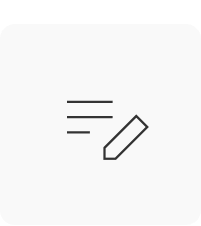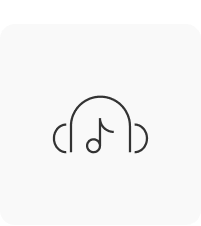"Take Your First Step into Korean Learning!"
Main topics of the Level 1 course:
- Basic greetings
- How to count numbers in Korean
- Basic grammar for forming your first Korean sentences
- Present and past tense
- How to say "who", "why", and "how" in Korean
Table of Contents
![]() Average lesson length: 13 minutes
Average lesson length: 13 minutes
Lesson 1. Hello. Thank you. / 안녕하세요. 감사합니다.
Lesson 2. Yes. No. What? / 네. 아니요. 네?
Lesson 3. Good-bye. See you. / 안녕히 가세요. 안녕히 계세요. 안녕.
Lesson 4. I’m sorry. Excuse me. / 죄송합니다. 저기요.
Lesson 5. It’s me. What is it? / 저예요. 뭐예요?
Lesson 6. What is this? This is … / 이거 뭐예요? 이거…
Lesson 7. This, That, It / 이, 그, 저
Lesson 8. It’s NOT me. / 아니에요.
Lesson 9. Particles for Topic and Subject / 은, 는, 이, 가
Lesson 10. have, don’t have, there is, there isn’t / 있어요, 없어요
Lesson 11. Please give me. / 주세요.
Lesson 12. It’s delicious. Thank you for the food. / 맛있어요. 잘 먹겠습니다. 잘 먹었습니다.
Lesson 13. I want to … / -고 싶어요
Lesson 14. What do you want to do? / 뭐 하고 싶어요?
Lesson 15. Sino-Korean Numbers / 일, 이, 삼, 사
Lesson 16. Basic Present Tense / -아요, -어요, -여요
Lesson 17. Past Tense / -았/었/였어요 (했어요)
Lesson 18. Particles for Location / 에, 에서
Lesson 19. When / 언제
Lesson 20. Native Korean numbers / 하나, 둘, 셋, 넷
Lesson 21. Negative Sentences / 안, -지 않다
Lesson 22. 하다 verbs
Lesson 23. Who? / 누구?
Lesson 24. Why? How? / 왜? 어떻게?
Lesson 25. From A To B, From C Until D / -에서/부터 -까지
Review What You’ve Learned in Level 1
Why you'll LOVE our Essential Korean Curriculum
All Levels Covered Short and Digestible Lessons Fun Story-based Reviews Review Quizzes and Interactive Audio Lessons
By simply following our curriculum that covers 10 levels, you can take your Korean skills from absolute beginner all the way up to advanced.
Each lesson is bite-sized and easy to understand, as it focuses on one grammar point at a time and provides many example sentences.
You can review the entire course through a fun story! The final lesson of each course features a fun story that allows you to review all the grammar and vocabulary introduced in the course.
You can test your new knowledge through review quizzes and interactive audio lessons, where our teachers ask you questions, and you can respond and check where you need to improve.
Who teaches this course?


What you can find in this course:

Lesson notes

MP3 file

PDF file

Sample dialogues

Sample dialogues

Review lesson
[Updated] Learn to Read and Write in Korean (Hangeul)![]()
#Hangeul #KoreanLetters #AbsoluteBeginners
How Korean Sentences Work![]()
#KoreanSentences #Grammar #Beginner
30 Essential Korean Adjectives For Beginners![]()
#KoreanAdjectives #Vocabulary #Beginner
20 Essential Korean Phrases For Beginners![]()
#KoreanPhrases #Speaking #Beginner
Level 1 Textbook ![]()
Level 1 Workbook ![]()
Level 1 Textbook & Workbook Package ![]()
More courses & books you might also like
[Updated] Learn to Read and Write in Korean (Hangeul)![]()
#Hangeul #KoreanLetters #AbsoluteBeginners
How Korean Sentences Work![]()
#KoreanSentences #Grammar #Beginner
30 Essential Korean Adjectives For Beginners![]()
#KoreanAdjectives #Vocabulary #Beginner
20 Essential Korean Phrases For Beginners![]()
#KoreanPhrases #Speaking #Beginner
Level 1 Textbook ![]()
Level 1 Workbook ![]()
Level 1 Textbook & Workbook Package ![]()






Why did you say”공부가
쉬워요” in lesson 11? (sample sentences)
I mean why did you delete 하 and 가 to the verb?
If someone know this please help me.
If you look at the sentence 한국어 공부가 쉬워요, 공부 is used as a noun (한국어 공부 –> “the study of Korean”). 하다 makes it a verb, so the 하다 is not necessary in this sentence. 가 is there to mark the subject of the sentence.
감사합니다!
add 가 to the verb*
Hi! So I’ve been studying Korean but i have no to practice it and I feel like that’s not helping my progress so if anyone wants to practice together my telegram username is mx_drea56 or you can just click the link https://t.me/mx_drea56 please text me if you want to study together it will be really useful and i would be really grateful!!
I also have kakao talk My Kakao Talk ID is Andrea408
do you have instagram cuz idont hane tele or kakao this is my insta think_in_your_self im so happy if we can practice it together
How do I get a certificate? I’d like to use it to get a job, and so on.
Proving your fluency is 10 times better than a cert in my eyes
Welp I’m teaching myself Korean but who ever wants to practice with me here is my insta curly_headed_nicole
Hello everyone , I am currently studying alone which is fun but also frustrating because I have no one to practice with. I have met a few people on KakaoTalk but they don’t really last long before they stop studying 🙁 I am really serious about learning Korean and I will be very happy and grateful if I find someone who is also passionate about learning Korean. My KakaoTalk ID is Tenitomi feel free to message me. Thank you
hello can i join too?
Hello. May I join your study group? my kakao id is limrynxvi
Hello. Can we study together?
My kakaoid is Laiba2907
omg same here i need someone i can text or call and be able to practice,no one really texted me on KakaoTalk so it would be nice to have someone to learn with.My KakaoTalk ID is Olivia1456.
I am also studying alone, but don’t have anyone to use it with and practise…now it feels like a study and study and forget cuz I cannot use it like I want to ㅠㅠ I add you if you want to practise??
Hey maybe we can add each other on something i don’t have any one that i can practice with
I’m trying to learn as well, but i’m going slow, there’s still a lot of things i don’t know so if you don’t mind you can add me if you want, my ID is MrSir
Hi. Lets do it together then….
Hi! I am also trying to learn on my own. May I join your study group?
Hello, (Lesson 24) why in “토끼를 5년 동안 길렀어요.” we use 어 and not 아?? Hor do we know since all the verbs end with 르?
For the little I know, it is because it is 기르, so you have to take into account that the verb ends in
“ㅣ” because the “ㅡ” disappears, so if it is not “ㅗ or ㅏ” you use ~어요/었어요, in this case it is “기” so it is 길렀어요. I hope I made myself understood. 😊😊😊 I hope I am right. 🤭🤭🤭
기르다 -> 길러요 usingㅓbecause when 르 followed by vowel it’s became double ㄹ and as we need to choose ㅏ orㅓ so we need to look at the previous syllable which is 기 and as it mentioned by Anna P: except for ㅏ ㅗ, which are followed by ㅏ the others are followed by ㅓ.
that’s why 다르다 -> 달라요 because the previous syllable before 르 is 다 – means we chose ㅏ
always look at the previous vowel in the word.
hope it helps 🙂
as far as I know, it depends on the vowel, like in all the conjugations except for ㅏ ㅜ, which are followed by ㅏ the others are followed by ㅓso 다르다 -> 달라요 but 기르다 -> 길러요
레벨 3 열심히 공부했어요. TTMIK 감사합니다!!
Hello! I am studying level 3 today and i have a question so would you please help me?
I want to know what is the word for direction in Korean?
Hi. I am Jay and a Korean.
It is 방향.
We say like
서울은 어느 방향이에요?
서울은 어느 방향으로 가야 돼요?
Hope this helps!
Hi!
It is 방향.
Examples are like
서울은 어느 방향이에요?
서울은 어느 방향으로 가야 돼요?
Hope this help
안녕 ! 미나 임니다 ! i’m currently on level 3 , if anyone want to practise korean with me please add me on instagram my id : yn.03
Hi, I am at level 6 currently but I just want to give a suggestion. I searched through all the levels and wondered why -라서 was never taught. I think it’ll be nice to include it in Lesson 3 Level 7? I think this add-on would be perfect.
What does it mean? Could you explain please?
Hi, sorry for the late reply, I don’t know how to check notifications here. What I meant is that I thought that it’d be appropriate for TTMIK to include the grammar point -(이)라서 in Level 3 Lesson 7 (just realised I typed wrongly in my original comment) because that grammar point is similar to -아/어/여서 as they’re both grammar points related to explaining or giving reasons. -(이)라서 is used with a noun like this: N + (이)라서 whereas -아/어/여서 is used with a verb as explained in the lesson. One example of using -(이)라서 is like this: 월요일이라서 한국어 수업이 없어요. In English: I do not have Korean class as it is Monday.
HELLO EVERYONE!!
Im looking for someone who wants to practice add me on Kakao Nay1975, and my Insta @blackdevil_1975.
HOLA A TODOS!!
Estoy buscando a alguien que quiera practicar conmigo, mi KaKao ID: Nay1975 y mi Insta @blackdevil_1975
Podemos practicar juntos si quieres, pero yo aún estoy empezando así que espero que no te moleste u.u me puedes agregar si quieres, mi ID es MrSir
HOLA A TODOS!!
Hi everyone! Im looking for someone who wants to practice, Im in level 1.
I am from Mexico so I speak spanish and english. Please contact me, this is my Instagram: @miriamcarreon1 TWITTER: @miriamcarreon1.
안녕하세요 여러분!
If anybody wants to practice, add me on Kakao Lorena2391 and my instagram is @the.lolife
I want to practice but i’m still a beginner, you can add me if you want, my ID is MrSir, i speak english and spanish 😀
I added you on Kakoa and Instagram 🙂
Let’s be friends and study korean together 😊 my kakaotalk ID is ‘itsmejackiee’
Hi! Hope you’re doing great. I’m currently doing level 3. But I cannot find on the website the dictation tracks for the kevel 3 workbook. Can you please help me? I find those tracks really helpful, since they help me improve my listening skills. I would greatly appreciate it if you could tell me where to find them. 😊
If you scroll all the way down on any page of the TTMIK website there should be a link to the download page for all the book audio files (“Book Audio”). Make sure to download the files for the workbook rather than the textbook though, which is a mistake I made initially.
Hey guys!
So I’m currently at Lesson 10 of Level 3.
I don’t have anyone I can practice with, so I think it would be fun to make some friends all over the world who lern Korean like me and are also searching for a study budy or just want to chat a bit ^_^
If anyone want’s to practice Korean together just add me on Instagram: @luisa.dronhofer
Just finished level 3! I could understand everything at “Test Your Korean” lecture!!! I am so proud of myself! I feel immense gratitude to you two and I will be really heartbroken once I finish all TTMIK lessons 🙁 You guys are starting to feel like family T_T
Hello again. I’m full of questions.
In Lesson 20, there is the sample sentence “냄새는 이상해도 맛있어요.” Would it be OK to use 냄새가 in this sentence instead? If so, would it mean something like “as for this smell, compared to others…”. Thank you in advance!
Hello. I have a question about Lesson 17. If using 위해/위해서 in a sentence makes it sound very formal then what do people typically use instead to convey the same concept in casual conversation?
It is (으)려고.
For example
저는 한국어를 공부하려고 한국에 왔어요.
저는 영어를 잘하려고 미드를 자주 봐요.
Hope this help.
When you say you go or come to a place to so something, you use only (으)러. For example, the first sentence would be “저는 한국어를 공부하러 한국에 왔어요.” because you’re saying that you came to korea to learn korean 🙂 I hope this helps.
Cool. Thanks
안녕하세요 여러분, 저는 Kerrie 입니다. I have been studying Korean for a while now, and I’m currently studying level 3, lesson 18 of TTMIK’s curriculums. Please add me on Instagram and be my study buddy, as I wish to speak fluent Korean someday, but I’m struggling with my pronunciation. I would also like to learn some Korean idioms as well if anyone here knows any please let me know…My Instagram acc: kl_chaewon_95 감사합니다!!
Hi friends! I’m on Level 3, lesson 11 and I can’t remember when to use (으)ㄴ 것 vs. 는 것 when changing a verb into noun form and how it applies to the ㅂ irregular rule. Anybody have some insight for me? Thanks in advance!
Hi!
For the ㅂ irregular rule, it works a little differently for the usage of (으)ㄴ 것 vs. 는 것.
For ㅂ irregular verbs, including describing verbs, you look at the verb stem and replace the ㅂ with either 오 or 우.
If the vowel before ㅂ is 오, change ㅂ to 오.
If the vowel before ㅂ is not 오, change ㅂ to 우.
Now let’s take 어렵다 as an example. It means “to be difficult”.
The verb stem is 어렵 and the vowel before ㅂ is not 오 but is instead ㅕ so you must replace the ㅂ with an 우.
Once you do that, the new verb stem is 어려우 and then you use that new verb stem to follow the rule for (으)ㄴ 것 vs. 는 것.
Since 우 is a vowel, you use ㄴ 것. Therefore “어려운 것 같아요” means “I think it’s difficult”.
Hope this helps! I’m not always the best at explaining things.
Right now, I feel that I don’t understand when to use verbs as adjectives and nouns and verbs. ??? Do you guys (or someone) have like… sample sentences or short readings in which these three friends are combined? I really need something like that. Thank you!
Hi everyone. I’ve created a group in instagram. The purpose is to help each other to learn korean and practice the language together. If u want to be add in this group, please add me in instagram: @lilx0u
I added you can you add me to the chat my istagram is tenny_t0mi btw
Hi Lilou. Count me in! 🙂 I just followed you on instagram @shennabanana47
Hello again,
In Lesson 8’s sample dialogue, the conversation ends with “그래서 좀 무섭기도 해요.”
Did we already learn the ~기도 해요 part in a prior lesson? I would like to review this because I blanked when I read that part of the sentence. Thank you.
Yep. The verb is in its noun form. You can review Lesson 14 – Level 2. I hope it’s useful!
Thank you!
안녕하세요.i wonder if i got this one right. K-pop 들은후에 한국어공부 리삭 했어요.